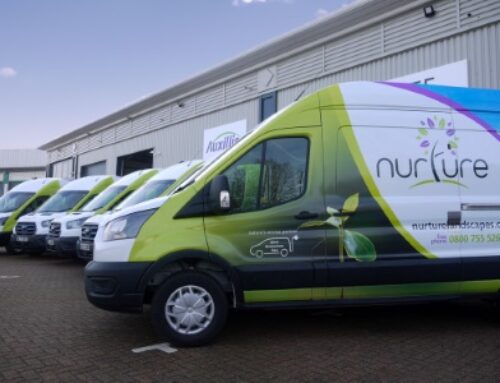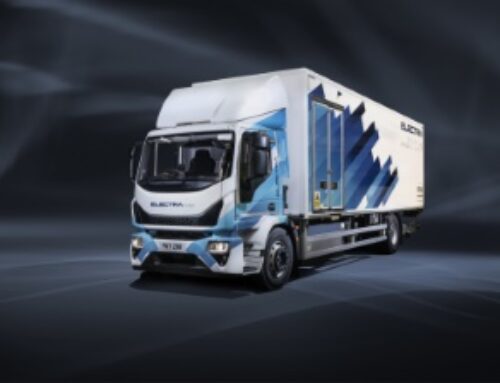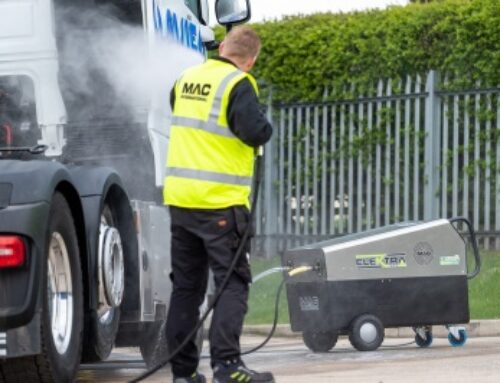Goodyear’s winter tyre guidance
 Tyre specialist Goodyear has issued advice for fleet operators around tyre and wheel maintenance during the winter months.
Tyre specialist Goodyear has issued advice for fleet operators around tyre and wheel maintenance during the winter months.
“There’s plenty that can be done to make sure a truck is ready to tackle the majority of what winter can throw at it,” said Eric Muller, director for products and innovation, commercial, Europe at Goodyear.
“The key is proper preparation and maintenance. Just a few small steps could reduce avoidable breakdowns and incidents involving commercial vehicles.”
Because winter can throw up all sorts of unpredictable weather and road conditions, all trucks should be checked for readiness before winter arrives, Eric contends.
“Having parts in-stock can also help fleets maximise winter uptime,” he added.
“Waiting around for consumables such as tyres can reduce winter mobility significantly.
“At the depot, a clear routine should be in place to ensure each truck is ready to go, no matter the weather. These checks should include tyre tread and pressures, brakes, and fluids. It should be clear to the driver if there are any issues with the vehicle that need addressing and depots should make it easy for these issues to be identified, looked at and fixed to maximise winter mobility.
“For large fleets, drive-over-readers can make checking tyres a quick job using technology that scans each vehicle as it enters the depot.”
He also emphasised the role of tyre selection.
“3 Peak Mountain Snow Flake (3PMSF) tyres are the standard for winter in Europe. They decrease winter braking distances, increasing safety.
 “From November 2012, the UNECE Regulation 117 requires that for tyres to be used in winter conditions, a minimum level of winter braking and traction needs to be achieved — tyres that pass these tests are marked as 3PMSF.
“From November 2012, the UNECE Regulation 117 requires that for tyres to be used in winter conditions, a minimum level of winter braking and traction needs to be achieved — tyres that pass these tests are marked as 3PMSF.
“3PMSF tyres can be used all year long and they are also compliant with winter regulations across Europe. There are some countries in Europe that require 3PMSF tyres not only to be fitted to the drive and/or steer axle but also on trailers, as this increases braking power and ensures the trailer won’t overtake the tractor.”
Goodyear’s latest generation of Kmax Gen-2 and Fuelmax Gen-2 drive, steer and trailer tyres, all including the 3PMSF marking, are especially developed to optimise traction along the service life, says Eric, even at 75 per cent worn.
“We created sophisticated tyre designs— namely, on the blades we put inside them. Their advanced shape is very resistant to tearing, chipping and chunking — while ensuring the tyre is good for winter and at the same time provides low rolling resistance to reduce the carbon footprint of the total vehicle.
“For areas with heavy snow conditions, a dedicated winter range such as the Ultra Grip Max is recommended. These 3PMSF tyres are designed for areas such as Scandinavia or the Alps where roads are frequently covered in snow and ice.”
The timely replacement of tyres and regrooving were also important considerations, he said.
“Almost all of us who drive regularly have been in a situation where the road has been blocked by a jack-knifing lorry. In the best-case scenario, this causes delays, but in the worst case, it can be downright dangerous. This is caused by lack of traction, and thanks to the weight carried by commercial vehicles, even the smallest skid can cause a large slide.
“Consumers might be used to wearing their tyres down to the legal limit before changing them, but this is poor practice. With a heavy truck, keeping an eye on tyre tread and condition is vital.
“At Goodyear, we advise looking at the tyre wear and early regrooving can refresh traction at the start of winter and will make them last longer. This allows fleets to keep good level of mobility during winter. Below five millimetres of remaining rubber, the tyre will offer less traction.”
He concluded: “Safety is important to the commercial vehicle industry and fleets are very proactive when it comes to preparing and maintaining their vehicles for winter use.
“Winter mobility isn’t just important for the haulage and transport sectors either; increased winter mobility also positively affects car drivers as it minimises delays on the road.”











